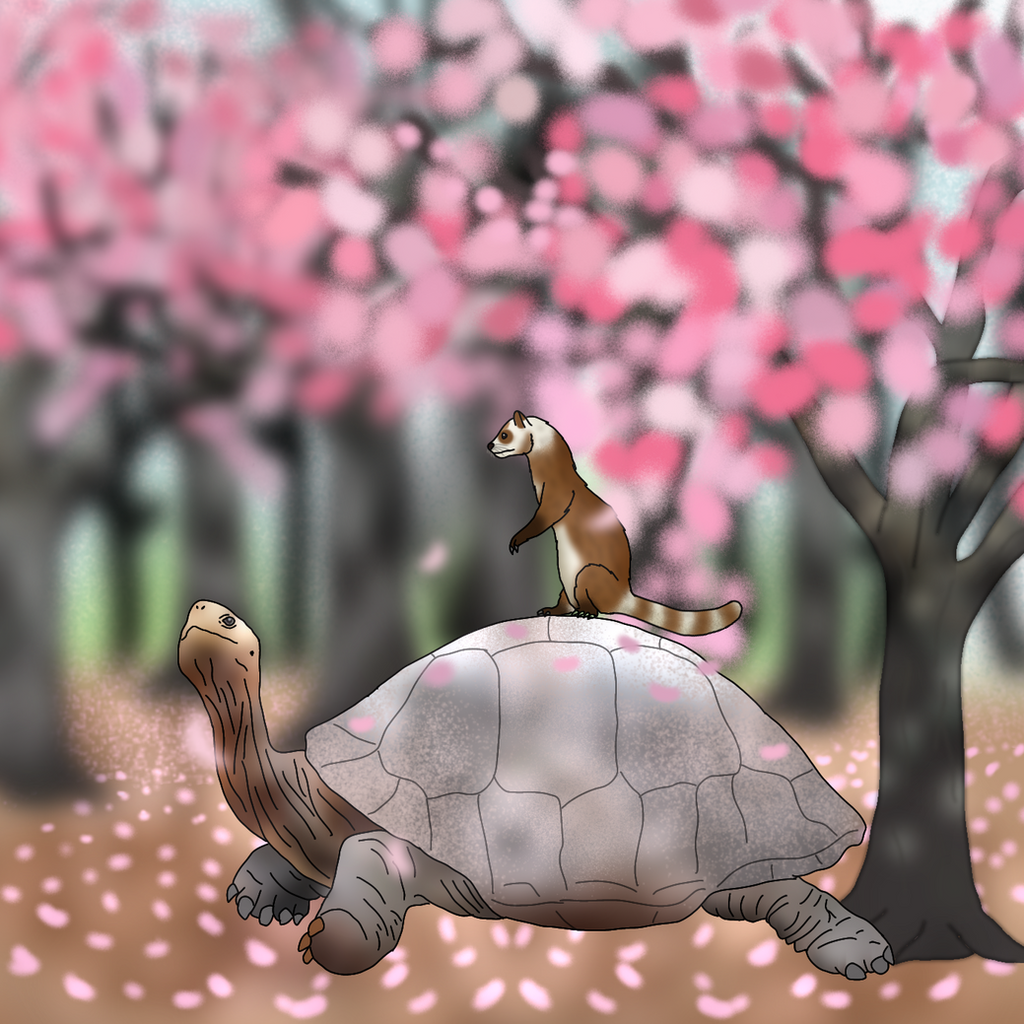HOME | DD
 Olmagon — There is only new(year)s, no good or bad
Olmagon — There is only new(year)s, no good or bad

#chelonian #peachblossom #prunus #peachflower #ailuridae #megalochelys #parailurus #cenozoic #chinesenewyear #digitalart #digitaldrawing #digitalillustration #digitalpainting #flower #mammal #paleoart #paleontology #peach #redpanda #reptile #tortoise #pliocene #carnivoran #paleoillustration #kungfupanda #kung_fu_panda #chinesenewyear2021
Published: 2021-02-09 16:56:26 +0000 UTC; Views: 6026; Favourites: 84; Downloads: 4
Redirect to original
Description
Chinese New Year is in 2 days, so here’s some paleo art that seems fitting since peach flowers are commonly used as decorative plants during this time by the Chinese.2.5 million years ago during the Pliocene epoch of what is now Yunnan province, China, an entire forest of Prunus kunmingensis trees have come into bloom as spring arrives. The treetops are now full of their pink flowers, with petals snowing down when wind blows past. On the forest floor below rests a Megalochelys atlas, a massive tortoise, which peacefully sits there doing nothing, not minding the petals or a Parailurus anglicus, an extinct relative of the red panda, that are on its carapace.
Prunus kunmingensis was described in 2015 after fossils of its endocarps were found in Kunming, the capital of Yunnan. Its remains show no difference to extant peaches, and the two are possibly synonymous. Currently the endocarps are all that’s known of it, but it can be assumed to be very similar (if not identical) to the extant peach (Prunus persica) and so I portrayed it with the same pink flowers. It is also significantly in showing that peaches are indeed a natural species instead of having been artificially bred to be like that the way domestic dogs are, as no wild peach populations are known and the plant’s origins have since been unclear.
Megalochelys atlas was the largest tortoise known to have lived (but some aquatic turtles were bigger), with a shell up to 2 meters long. Part of a genus with multiple species, M. atlas was also very widespread, having its fossils found from India all the way east to Indonesia and Timor, and it probably once ranged all across south and Southeast Asia. In fact, giant tortoises once ranged throughout much of the world, but Stone Age human hunting has led to them now only existing on isolated islands. M. atlas also has quite a messy taxonomic history, having once been placed in various genera like Testudo, Geochelone and Colossochelys (which is now deemed a synonym of Megalochelys) and even whether its proper name should be M. atlas or M. sivalensis has been disputed , but the latter is usually deemed a nomen nudum.
Parailurus anglicus is an extinct carnivoran mammal of the family Ailuridae, whose only extant species is the red panda. While Ailuridae today is restricted to a small mountain range in Asia, the family was once more widespread and diverse, with P. anglicus having ranged from as far west as Britain in Europe to as far east as Japan. Its head-to-vent length was a bit over a meter and its teeth suggest it fed largely on leaves like the red panda, but would probably occasionally eat small animals and eggs too.
There’s also a kinda obvious reference to a certain movie in this image, made even more obvious by the title. Also, first Parailurus on DA!
Related content
Comments: 14

👍: 0 ⏩: 1

👍: 0 ⏩: 1

👍: 0 ⏩: 1

👍: 1 ⏩: 1

👍: 0 ⏩: 0

👍: 0 ⏩: 1

👍: 0 ⏩: 2

👍: 1 ⏩: 1

👍: 2 ⏩: 1

👍: 0 ⏩: 0

👍: 2 ⏩: 0
























